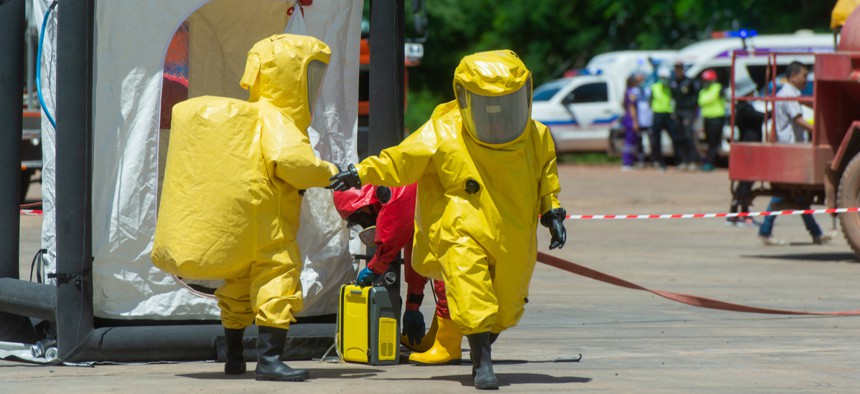DARPA Wants Smart Suits to Protect Against Biological Attacks

sandyman/Shutterstock.com
A new program aims to usher in a modern military ensemble that can provide 100% survival against lethal exposure from multiple chemical and biological agents.
The Pentagon's research arm—the Defense Advanced Research Projects Agency—wants to accelerate the development of innovative textiles and smart materials to better and more comfortably protect humans from chemical and biological threats.
According to a recently published broad agency announcement, DARPA’s Biological Technologies Office launched the Personalized Protective Biosystem, or PPB program to rapidly produce wearable technology that prevents threatening agents from entering the body and cutting-edge barriers that can neutralize damaging agents when they come into contact with people’s skin, eyes and airways.
“The current [chemical and biological] threat environment consists of broadly acting, highly pathogenic, and sometimes immediately lethal threats that are capable of entering the body via multiple pathways, including skin, airway, ocular, and the gastrointestinal tract,” officials wrote in the announcement. “Despite substantial financial investments and advances in the CB Defense enterprise over many decades, current personal protective equipment solutions add logistical, mobility, and thermal challenges to the warfighter/stability operations care provider, which place their missions at risk.”
The program ultimately aims to boost protection against toxic threats of the present and future, while simultaneously eliminating bulky, cumbersome protective equipment that can limit military personnel as they combat unpredictable dangers. While protective products are generally thick and not-so-adaptable, the PPB program aims to modernize textile protection by taking “cues from natural systems capable of protecting against a diverse array of threats.”
For example, officials note that antifouling of a shark’s skin—which enables the fish to keep unwanted microorganisms from clinging to its surface—could offer unique protective applications for humans, as well. Similarly, bacterial communities in the human body that protect against fungal infections could also pose an approach to be mimicked.
“Molecular, nano, and other material solutions, when coupled with lessons from natural systems, will be integral for PPB technologies to protect against current and future CB threats,” DARPA notes.
Through its duration, insiders aim for the program to usher in a modern ensemble to be worn in both military and disaster relief operations that can provide 100% survival against lethal exposure from 11 separate chemical and biological agents, including nitrogen dioxide, malaria, influenza and others.
“The Personalized Protective Biosystem will provide on-demand, broad-spectrum protection that can evolve at the pace of emerging threats,” officials wrote.
Interested individuals will need to address two technical areas through their approaches: solutions that will prevent contact between the body and threat agents using protective, smart materials with low logistical burdens, as well as those that will effectively neutralize threats once they reach vulnerable tissue barriers. The agency notes that the new PPB ensemble will need to work for deployments lasting up to 30 days and the agency ultimately hopes solutions can be self-administered through handheld devices.
DARPA seeks to award multiple entities for the project and notes that the amount of resources made available will depend “on the quality of the proposals received and the availability of funds.” Those interested in participating are invited to attend the Proposers Day in Washington on Dec. 4 and submit a proposal abstract by Jan. 7.
Full proposals are due Feb. 20.






